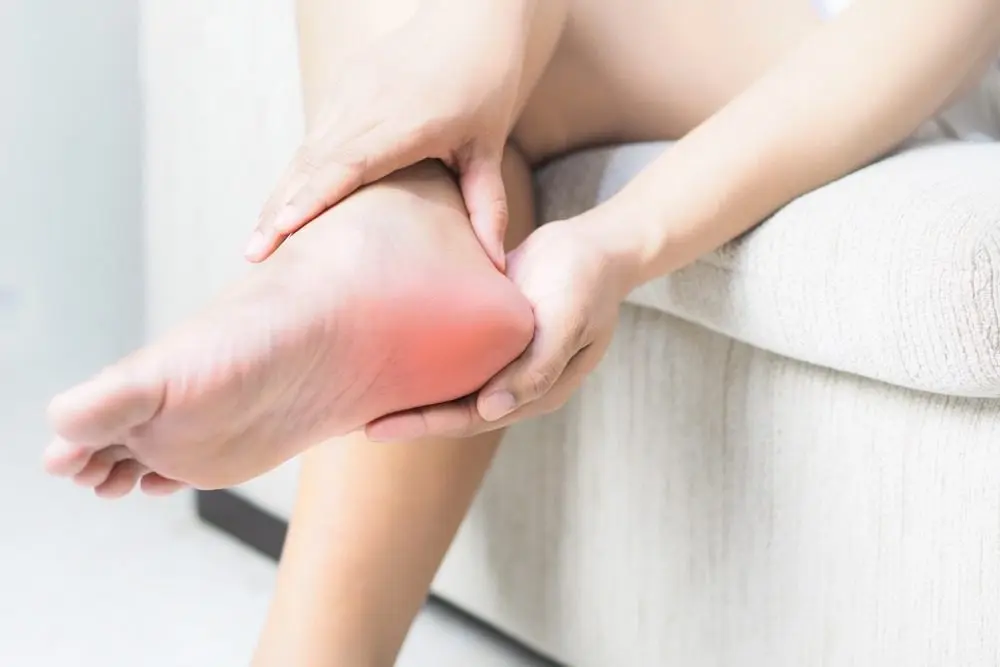
Inflammation of the panniculus, a fatty layer under the epidermis, causes heel panniculitis, a dermatological disease.
To treat both your heel and your skin, this inflammatory condition frequently necessitates the help of a podiatrist and a dermatologist. However, panniculitis can affect any fatty tissue in your body.
This skin disease can be very uncomfortable and might make it difficult to go about your regular activities. PiedReseau tells you more about this condition and how to fight it.
Heel panniculitis symptoms
The development of nodules under the skin is the most common sign of panniculitis. Although benign, these tumors should be constantly monitored.
The nodules, which resemble balls and are sensitive to touch, create abnormalities in the afflicted skin area. Heel panniculitis, for example, can make it difficult to walk about and create a lot of foot pain.
Other symptoms associated with nodules in the foot include:
- Inflammation
- Bruising
- Having trouble putting your shoes on
- Swelling of the Achilles tendon (calcaneal tendon)
Knowing the causes of this inflammatory skin condition is very crucial in order to avoid it as much as possible.
Heel panniculitis causes
Heel panniculitis can be caused by a number of factors, including our environment and our health. The most prevalent cause of panniculitis, however, is trauma that has gone untreated for an extended period of time.
Panniculitis can be caused by a variety of factors in addition to infections:
- Poorly fitting shoes, causing heel rubs
- Very cold temperatures
- Foot injuries
- Crohn’s disease
Panniculitis is an uncommon complication of several of the reasons listed above. However, it is critical to be cautious and seek medical advice if in doubt. Prevention becomes much easier!
Heel panniculitis prevention
Treatment of the underlying medical condition is the only approach to truly prevent panniculitis. As a result, the best approach to avoid this condition is to see a podiatrist or dermatologist, especially if nodules appear.
However, because panniculitis can have a variety of reasons, a comprehensive diagnosis is required to determine how to act effectively. Furthermore, understanding what home remedies to use while waiting to see a dermatologist will help prevent the spread of this illness.
Possible home treatments
Although heel panniculitis necessitates medical attention, it is possible to treat the condition at home to speed up your recovery.
Here are some ideas for how to go about it:
- Nonsteroidal anti-inflammatory drugs (NSAID)
- Resting your legs
- Elevating the legs to improve blood flow and alleviate lesions
In the early stages, these treatments may be appropriate, pending a consultation with a podiatrist or dermatologist.
Podiatrist care
Depending on the severity of your heel panniculitis, your podiatrist may employ a variety of techniques to treat it. This specialist will, however, establish a diagnosis before selecting the most appropriate treatment for the patient.
Panniculitis might have symptoms that are similar to plantar fasciitis. As a result, it’s critical to distinguish between them. The podiatrist will accomplish this by determining the pathophysiology with musculoskeletal ultrasonography.
The podiatrist will choose the appropriate therapy for you after the diagnosis is confirmed. This might involve a dermatologist recommendation. The following are examples of possible solutions:
- The underlying illness is treated as follows:
As previously stated, treating panniculitis necessitates addressing the underlying illness or damage. As a result, the podiatrist will collaborate with the physician in charge of the disease’s treatment.
- Corticosteroid medications:
The podiatrist may prescribe corticosteroids, which are anti-inflammatory drugs that are applied to the affected area.
Cortisone injections in the calcaneus region of your heel may be required in some situations. To guarantee precision, these ultrasound-guided injections are carried out with the assistance of imaging. Although some people are hesitant to utilize this technique, it is a natural hormone with several advantages:
- It helps to alleviate discomfort.
- It is not poisonous.
- It hastens the healing process and the recovery period.
PiedReseau: your podiatric experts for heel panniculitis treatment
PiedRéseau’s podiatrists have pooled their resources to provide the best podiatric care to Quebec residents across the province. More than forty PiedRéseau clinics are operating today to help you improve your health.
Take advantage of cutting-edge technology and patient centered care from highly trained experts.
Find a clinic near you and make an appointment with us right now to get your heel panniculitis treated.